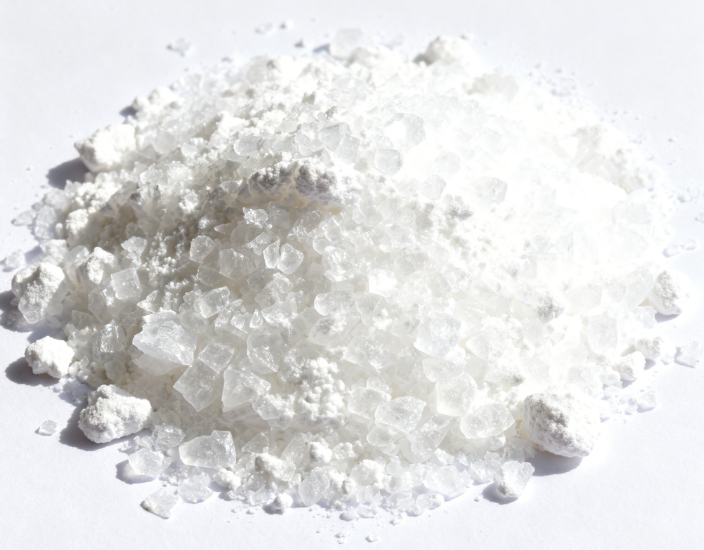Introduction
Tranexamic acid has emerged as a remarkable compound with dual applications in both medical therapeutics and advanced skincare. Originally developed as a prescription medication for controlling bleeding, this versatile ingredient has found new life in the cosmetic industry, particularly in addressing hyperpigmentation and skin discoloration concerns.
What is Tranexamic Acid?
Tranexamic acid is a synthetic derivative of the amino acid lysine, classified as an antifibrinolytic agent. Its primary mechanism involves inhibiting the activation of plasminogen to plasmin, thereby preventing the breakdown of blood clots. This fundamental action underpins both its medical applications and its emerging uses in dermatology.
Medical Applications and Usage
Primary Indication: Heavy Menstrual Bleeding
The FDA-approved use of tranexamic acid is for the treatment of heavy menstrual bleeding in women. Clinical studies demonstrate its effectiveness in significantly reducing menstrual blood loss when taken as directed:
-
Typical dosage: 1300 mg (two 650 mg tablets) three times daily
-
Maximum treatment duration: 5 days per menstrual cycle
-
Should be initiated only after menstruation has begun
-
Available by prescription only in most countries
Mechanism of Action in Bleeding Control
As an antifibrinolytic agent, tranexamic acid works by blocking the interaction between plasminogen and fibrin, thereby stabilizing blood clots and preventing their premature dissolution. This action makes it particularly effective in controlling bleeding where fibrinolysis plays a significant role.
Important Safety Considerations
Contraindications and Precautions
Tranexamic acid carries specific contraindications that healthcare providers must consider:
-
Absolute Contraindications:
-
Active thromboembolic disease
-
History of venous or arterial thrombosis
-
Retinal artery or vein occlusion
-
Combination with hormonal contraceptives
-
-
Special Populations:
-
Not recommended for postmenopausal women
-
Limited data in pediatric patients under 12 years
-
Caution required in renal impairment
-
Breastfeeding requires risk-benefit assessment
-
Drug Interactions
Significant interactions occur with:
-
Combination hormonal contraceptives
-
Certain anticoagulants
-
Tretinoin (particularly in leukemia patients)
-
Anti-inhibitor coagulant complex
Emerging Applications in Skincare
Mechanism in Hyperpigmentation Treatment
Recent research has revealed tranexamic acid’s effectiveness in treating melasma and post-inflammatory hyperpigmentation through multiple pathways:
-
Inhibits UV-induced plasmin activity in keratinocytes
-
Reduces melanocyte-stimulating factors
-
Decreases vascular endothelial growth factor
-
Interferes with melanosome transfer to keratinocytes
Clinical Evidence in Dermatology
Multiple studies have demonstrated:
-
Significant improvement in melasma severity scores
-
Reduction in hyperpigmentation area
-
Good tolerability in topical formulations
-
Synergistic effects with other depigmenting agents
Formulation and Usage in Skincare
Available Forms for Topical Use
-
Creams and gels (typically 2-5%)
-
Serums and solutions
-
Combination products with other active ingredients
-
Microneedling and mesotherapy solutions
Recommended Usage Patterns
-
Twice daily application to affected areas
-
Sun protection is essential during treatment
-
Typically requires 8-12 weeks for visible results
-
Maintenance therapy often needed for sustained benefits
Quality and Sourcing Considerations
Pharmaceutical vs. Cosmetic Grade
-
Pharmaceutical Grade: Meets strict USP standards for purity and potency
-
Cosmetic Grade: Formulated for topical application with appropriate excipients
-
Raw Material Quality: Essential for both efficacy and safety
Regulatory Status
-
Prescription-only for oral formulations
-
Over-the-counter availability for topical products in many markets
-
Varying regulatory requirements across different regions
Future Directions and Research
Ongoing Clinical Investigations
-
New formulations for enhanced skin penetration
-
Combination therapies with other depigmenting agents
-
Extended applications in inflammatory skin conditions
-
Optimal dosing strategies for different ethnic skin types
Market Trends
-
Growing consumer awareness of hyperpigmentation treatments
-
Increasing demand for evidence-based skincare ingredients
-
Expansion into broader cosmetic applications
-
Rising interest in multi-functional active ingredients
Conclusion
Tranexamic acid represents a compelling example of drug repurposing, bridging the gap between pharmaceutical science and cosmetic innovation. While its medical use for heavy menstrual bleeding remains well-established, its application in dermatology continues to evolve with growing scientific support.
For medical purposes, tranexamic acid should only be used under proper medical supervision with careful attention to contraindications and dosing guidelines. In skincare, it offers a promising option for addressing hyperpigmentation concerns, though consumers should seek products from reputable manufacturers with appropriate quality controls.
As research continues to expand our understanding of this versatile compound, tranexamic acid is poised to maintain its significant role in both therapeutic and cosmetic applications.
Interested in Premium Quality Tranexamic Acid for Your Product Development Needs?
Contact us today to request product samples, detailed technical specifications, and expert formulation support. Our team is ready to assist you in developing innovative products that harness the proven benefits of this multifunctional compound.






Leave A Comment